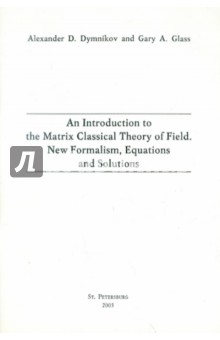«An Introduction to Numerical Methods and Analysis», James...

Throughout the text, students are provided clear and accessible guidance on a wide range of numerical methods and analysis techniques, including root-finding, numerical integration, interpolation, solution of systems of equations, and many others. This fully revised third edition contains new sections on higher-order difference methods, the bisection and inertia method for computing eigenvalues of a symmetric matrix, a completely re-written section on different methods for Poisson equations, and spectral methods for higher-dimensional problems.
Реклама. ООО «ЛитРес», ИНН: 7719571260, erid: 2VfnxyNkZrY.
An Introduction to the Finite Element Method for Differential Equations

...An introduction to basic ordinary and partial differential equations The concept of fundamental solutions using Green's function approaches Polynomial approximations and interpolations, quadrature rules, and iterative numerical methods to solve linear systems of equations Higher-dimensional interpolation procedures Stability and convergence analysis of FEM for differential equations. This book is ideal for upper-level undergraduate and graduate students in natural science and engineering. It belongs on the shelf of anyone seeking to improve their understanding of differential equations.
Реклама. ООО «ЛитРес», ИНН: 7719571260, erid: 2VfnxyNkZrY.
An Introduction to the Finite Element Method for Differential Equations

...An introduction to basic ordinary and partial differential equations The concept of fundamental solutions using Green's function approaches Polynomial approximations and interpolations, quadrature rules, and iterative numerical methods to solve linear systems of equations Higher-dimensional interpolation procedures Stability and convergence analysis of FEM for differential equations. This book is ideal for upper-level undergraduate and graduate students in natural science and engineering. It belongs on the shelf of anyone seeking to improve their understanding of differential equations.
Реклама. ООО «ЛитРес», ИНН: 7719571260, erid: 2VfnxyNkZrY.
-
An Introduction to Mathematical Modeling. A Course in Mechanics
 www.litres.ru Купить
www.litres.ru КупитьРеклама. ООО «ЛитРес», ИНН: 7719571260, erid: 2VfnxyNkZrY.
Лучшие книги по инвестированию - ТОП 33 книг
 journal.litres.ru Купить
journal.litres.ru КупитьРеклама. ООО «ЛитРес», ИНН: 7719571260, erid: 2VfnxyNkZrY.
Купить книги дешево. Низкие цены на книги с доставкой в книжном...
 Book24.ru Купить
Book24.ru КупитьРеклама. ООО «Новый Книжный Центр», ИНН: 7710422909, erid: LatgBWwPR.
Для формирования результатов поиска книг использованы различные сервисы поисковых систем.
Выше вы можете купить бумажную и электронную версию книги дешево и по самой лучшей цене в известных интернет-магазинах Лабиринт, Читай-Город, Буквоед, МИФ, Озон, book24, Литрес. Книги можно купить со значительными скидками!
